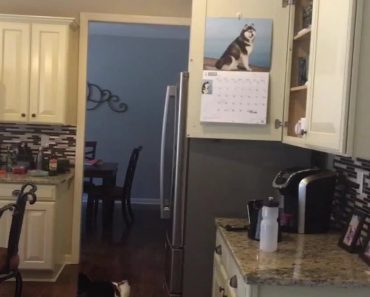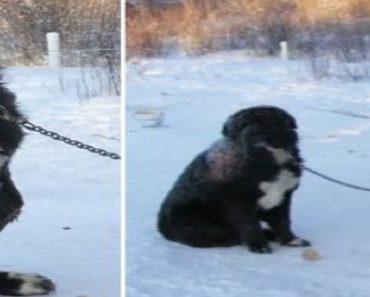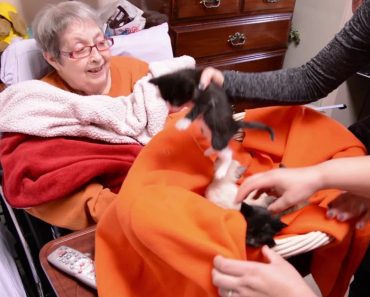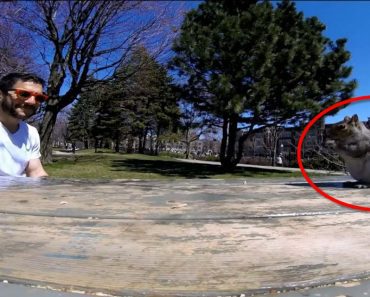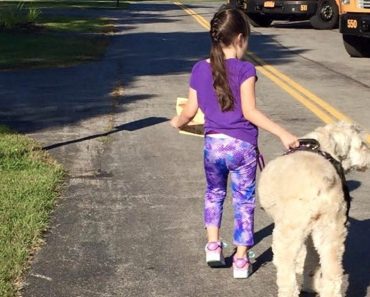“Raccoons are animals that excel at adapting to suburban and even urban environments. They can be found outside passing through a property, getting into garbage or pet food,” Ian Williams, a training manager at Trutech Critter Control, a national wildlife control company said. “They can also take up residence in your home, living underneath [it] in a crawlspace, or even in attics and chimneys. Raccoons are excellent climbers, and can scale trees and branches to get on a roof, but can also climb fencing and gutter downspouts.”
“Breaking up families during raccoon removal can put raccoon babies, also known as kits, in a vulnerable position,” writes the Humane Society of The United States (HSUS), “so use caution when deciding your eviction approach. Regulations on raccoon removal and relocation vary by state, so if you’re going to attempt some DIY raccoon extraction, it’s best to know what you’re getting into first.”
Here is what you need to know about getting rid of raccoons humanely.
First, here is how to tell if you have raccoons in the first place
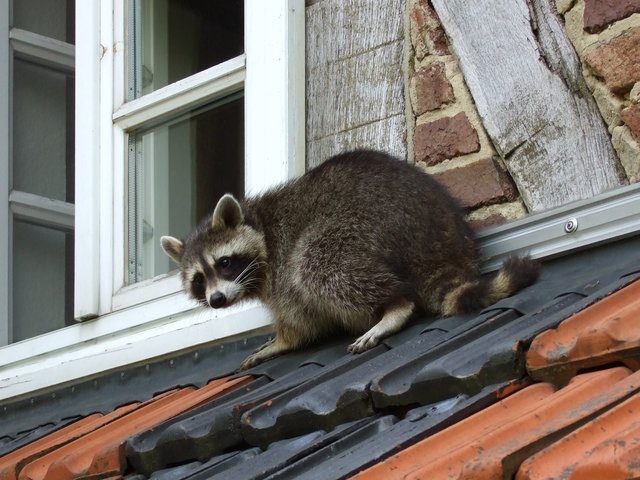
If you hear scratching, rummaging, clawing, growling, chirping or thumping sounds that begin at dusk and end in the early hours of the morning, you may be harboring one (or more) of these creatures. Try looking hand-shaped paw prints in the yard, tousled trash, and scat stations (essentially raccoon bathrooms) on the roof, in the attic or near your house.
Other telling signs that raccoons have moved in include roof damage. Such as ripped up tiles or drywall, to make de facto entrance ways. See if a hole is being used actively. HSUS recommends stuffing the opening with wadded newspaper and observing whether the newspaper has been disturbed after two or three days.
Raccoons wash their own food,so if you spot remnants of their nightly forage, that’s a telltale sign as well.
How to get them to leave
If you have located the raccoons’ hiding spot, use gentle techniques to coax them out. HSUS recommends a combination of “light, noise and smell” to convince them to leave. Try shining bright lights into their hole, playing loud music and putting out a bowl of cider vinegar or a few ammonia-soaked rags to make their den smelly. Begin around dusk for the best results, but do not harass raccoons during the day, this may disorient them, according to HSUS.
It’s best to consult a wildlife control professional for advice if you suspect that raccoons may be using your attic or chimney as a nest. Mating season for raccoons falls anywhere between January and June, and mothers typically give birth to between two and five kits in the spring.
Williams warns never, ever get near the nest. “Mother raccoons are extremely protective, and will attack you if you get between her and her young,” Williams says. “Depending on climate, raccoons typically give birth once a year and have babies between April and June. If a raccoon is inside the home (attic or crawlspace), do not enter that area without proper protective equipment, or call a professional to remove it.”
If you separate a mother and her kits, it can lead to the babies starving and the mom causing more damage trying to return to her nest, according to Williams.
“Raccoons are very powerful animals, so only seal up a home once you are certain that there are no more animals or babies inside the home,” Williams says. “Raccoons also use scent marking behavior to mark territories. After an area is sealed, the interior should be cleaned, disinfected or sanitized, and deodorized to further discourage raccoons from trying to nest or harbor in the same areas again.”
Call a humane wildlife removal expert
Removal can be tricky, and in many situations, a humane wildlife removal expert will be needed to safely address the issue. Raccoons can cause a lot of damage, so don’t hold off on contacting a humane wildlife control company near you.
“If in an attic or wall, they will destroy most types of insulation by compressing it, moving it around, or defecating and urinating on it,” Williams notes. “If they have access to electrical cables, water lines and ducting they can chew on, shred, pull apart or tear these utilities, which can be very costly to repair, and potentially very dangerous to the homeowner. They also risk bringing in other unwanted pests, such as fleas and ticks.”
Keep them from coming back
“Prevention is key,” Williams notes. “If raccoons are a common occurrence in your area, you need to make your property less attractive to them as a place to live.”
You can try cutting off their food supply and don’t leave pet food outside where raccoons are likely to find it and make sure your trash cans are securely sealed and raccoon-resistant.
Williams recommends repairing any openings in your home, or gaps which might be smaller than you think. “A raccoon can fit through an opening the size of a softball,” Williams adds. “If there is easy tree access to roofs, you may want to cut back limbs to make it more difficult for raccoons to gain access.”
Raccoons are not pets
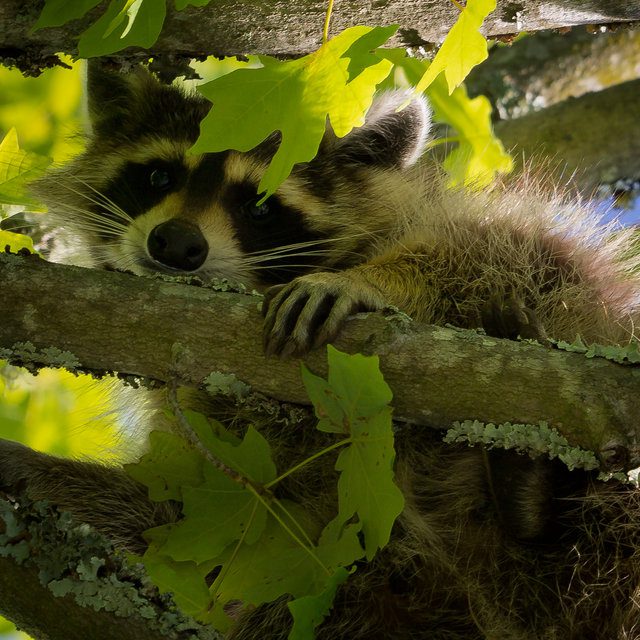
Raccoons look adorable, but Williams stresses that “one should never get too cozy with these critters. Raccoons can carry rabies — one more reason to address their presence in your home as soon as possible.”
“While the likelihood of an individual raccoon having rabies is usually low, the hazards associated with rabies for humans and pets are too great to ignore,” Williams advises. “Raccoons don’t always exhibit classic signs of rabies exposure, so the fact that they are not foaming at the mouth or aggressive is not proof positive that they do not have rabies.”
Do not attempt to feed or pet a wild raccoon. In addition, do not pick up a baby raccoon, even if the mother is out of sight. If you see a raccoon acting strangely, call your local animal control service for help.
If you know someone who might like this, please click “Share!”

